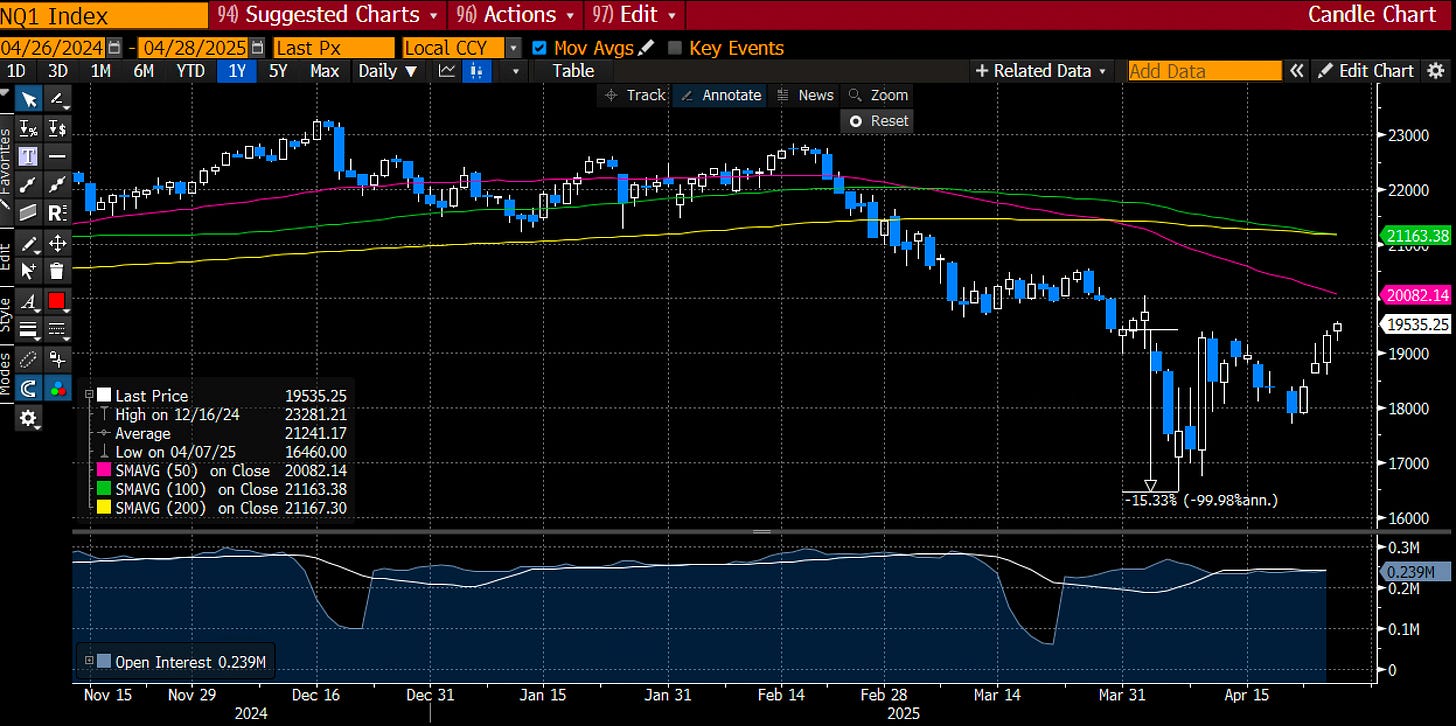Attack the Week (ATW)
April 27, 2025
Sunday Thoughts
Doing nothing is sometimes the perfected art. In Zen Buddhism, for example, the concept of "doing nothing" is closely tied to the idea of wu wei, a term often translated as "effortless action" or "non-action." Wu wei doesn't mean doing nothing in the literal sense, but rather acting in harmony with the flow of life without force or resistance. It is about allowing things to unfold naturally, without attachment to outcomes or unnecessary interference.
In Stoicism, the concept of "doing nothing" aligns with the idea of apatheia, a state of inner peace and freedom from passion and virtue, which involves acting according to reason. Stoic philosophy teaches that we cannot control external events, only our responses to them. In moments of crisis or distress, Stoicism advises against reacting to emotions and instead choosing to maintain inner calm, which is akin to "doing nothing" in the sense of not being swept up by negative emotions.
As we have all witnessed, heightened volatility has been evident in the past several weeks, and the natural inclination is to overreact. The media, as always, sensationalises volatility, creating a narrative that induces fear and urgency, which in turn drives investors to act hastily. Our amygdala is programmed to protect us. If it detects a potential threat, it triggers a series of physiological and emotional responses designed to prepare the body to respond quickly and effectively. I covered this in the piece “Emotional Risk Management”.
Seasoned investors know all too well that avoiding emotional traps leads to better investment results. Most importantly, it’s once again paramount to follow one’s process and risk management rules. Your chances of success are significantly improved if you adhere to a proven set of principles. For this reason, I have established a comprehensive investment process in the Macro Book series for subscribers, which includes the most important pillars of idea generation, trade structuring, position sizing and portfolio construction.
The Nasdaq is up in April. Looking at the chart below, however, reveals that the index faced a 15% monthly drawdown earlier in the month. Doing nothing didn’t cost you anything in this instance, while panicking could have given you a recipe for regret.
Risk parity funds (10% vol, including commodities) have also bounced back strongly and are now up for the month. Typically, they are not forced to cut risk in drawdown events.
The trend-following (CTAs) crowd, meanwhile, didn’t fare as well as risk limits, including increased volatility, forced them to cut risk, which explains their inability to bounce with market betas.
Different outcomes for varying investment styles and processes are natural. There is no shame in losing money while following your rules, as long as those rules are grounded in sound principles and risk management. This month, unlike many others, is one where any process would have been tested, given the market's volatility and unexpected shifts. The key is not to deviate from your strategy during times of stress, as emotional reactions can lead to hasty decisions and further losses.
Over time, sticking to a well-defined approach will often prove more beneficial than chasing short-term gains or attempting to predict every market move. Doing nothing is a viable choice if that’s how your strategy is intended to function. Paper Alfa’s 2025 buy-and-hold portfolio (see below) has also rebounded nicely after drawing down, now posting a very respectable +5.8% return YTD.
At Paper Alfa, we certainly don’t panic. The focus is to educate and provide tools and best practices for everyone’s investment journey ahead. We cover asset allocation, as well as tactical trade ideas offered to us by our momentum, reversal, and intra-day models. In addition, I will publish a few more comprehensive macro pieces, untangling the effects of trade and budget deficits and what history tells us about how these factors affect markets.
A reminder that you can now also use my models in TradingView scripts, which I made available for subscribers to use on their charts. This is not for free and incurs an additional cost.
If you are interested, ping me an email with your TV username. Note that only paying subscribers will be granted access. No exceptions.
You have until the end of April to make use of a 20% discount. Why wait? Join a growing community and lock in a great price forever.
Let’s now read Macro D’s latest thinking before briefly scanning the week’s upcoming calendar. We then revisit some charts, which give us some interesting setups. As always, we conclude with a review of the output from our asset allocation model.
Let’s go!






